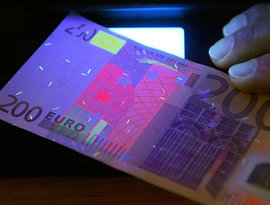Banks, EU – Baltic States, Financial Services, Legislation
International Internet Magazine. Baltic States news & analytics
Friday, 26.04.2024, 19:10
331,000 counterfeit euro bills withdrawn from circulation in H1
 Print version
Print version |
|---|
The majority (81%) of the counterfeits are EUR 20 and EUR 50 bills.
The European Central Bank indicates that the amount of counterfeit euro bills in the first half of 2014 was 6.2% lower than in the second half of 2013. 353,000 counterfeit euro bills were removed from circulation in the second half of 2013, while in the first half of 2013 the number of counterfeit bills was 317,000. As compared to 2012, the number of counterfeit bills has increased – in the first half of 2012, 251,000 counterfeit euro bills were withdrawn from circulation, while in the second half of the year – 280,000 euro banknotes.
98% of the counterfeits were found in euro area countries, 1.9% were found in EU Member States outside the euro area and 0.1% in other parts of the world.
The European Central Bank indicates that overall, the number of counterfeits remained very low compared with the number of genuine banknotes in circulation during that period – over 16 billion.
Nevertheless, the European Central Bank and the 18 central banks of the euro area advise people to pay attention to the euro bills they receive. Genuine bills can be easily recognized using the simple "feel, look and tilt" method described on the euro pages of the European Central Bank's website and the websites of the Eurosystem national central banks. If a person receives a suspicious euro bill, he or she should compare it directly with one that is known to be genuine. If those suspicions are confirmed, the person should contact either the police or – depending on national practice – the respective national central bank.








 «The Baltic Course» Is Sold and Stays in Business!
«The Baltic Course» Is Sold and Stays in Business!

